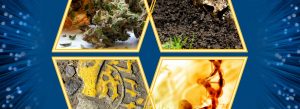Original Release Date: November 25, 2022 In episode one of our Case Studies: Part 2 mini season, Just Science sat down with Kelly Ayers, an International Association for Identification certified Senior Crime Scene Analyst, to discuss how preliminary autopsy results…
Category: Bloodstain Pattern Analysis
Human Factors in Forensic Science Practice
This webinar originally occurred on June 21, 2022 Duration: 1 hour Overview Human factors may encompass any way in which people’s psychological or physiological attributes affect a system or process. Physiological considerations include things like the ergonomics of laboratory workstations…
Just the Analysis of Impressions and Patterns
Original Release Date: May 27, 2022 In episode four of our Strengthening the Forensic Workforce season, Just Science sat down with Assistant Professor Jessica Zarate and 5th year student Kristen Szabelski at Madonna University in Michigan, as well as Dr.…
Just Higher Education and the CSI Effect
Original Release Date: May 13, 2022 In episode two of our Strengthening the Forensic Workforce season, Just Science sat down with Dr. Sarah Williams, a Research Associate Professor in Forensic Science at Virginia Commonwealth University, and Dr. Keith Morris, a…
Terrestrial LiDAR Scanners: Guidelines for Use in Criminal Justice Applications
This webinar originally occurred on May 3, 2022 Duration: 1 hour Overview Terrestrial LiDAR scanning devices (also known as terrestrial laser scanning devices, TLS) acquire complex geometric data that capture a three-dimensional representation of a scene. This technology can be…
Guidelines for the Use of Terrestrial LiDAR Scanners in Criminal Justice Applications
Date March 2022 Overview Terrestrial LiDAR scanning devices (also known as terrestrial laser scanning devices, TLS) acquire complex geometric data that capture a three-dimensional representation of a scene; this technology is used in criminal justice applications such as documenting a…
Human Factors in Forensic Science Practice Sourcebook
Publication Forensic Science International: Synergy, March 2022 Editors Heidi Eldridge, PhD | RTI International Barbara A. Spellman, JD, PhD | University of Virginia School of Law Thomas Busey, PhD | Indiana University, Psychological and Brain Sciences Working Group Members Paul…
2022 NIJ Forensic Science R&D Symposium
Overview The Forensic Technology Center of Excellence (FTCOE) assisted the National Institute of Justice (NIJ) in hosting the annual NIJ Forensic Science Research and Development (R&D) Symposium on March 1st & 2nd, 2022 from 10:00 AM to 6:00 PM Eastern.…
Just the Impression and Pattern/Trace Evidence Portfolio
Original Release Date: June 11, 2021 In episode two of our 2021 NIJ R&D and Beyond mini season, Just Science sat down with Dr. Gregory Dutton, a physical scientist in the Office of Investigative and Forensic Sciences at the National Institute of Justice, to discuss NIJ’s Impression, Pattern, and Trace…
Lessons Learned from Proficiency Test Results in Bloodstain Pattern Analysis
This webinar originally occurred on April 15th, 2021 Duration: 1 hour Overview The Daubert ruling by the Supreme Court established “the known or potential rate of error” as one of several factors to be used when assessing the scientific reliability…







